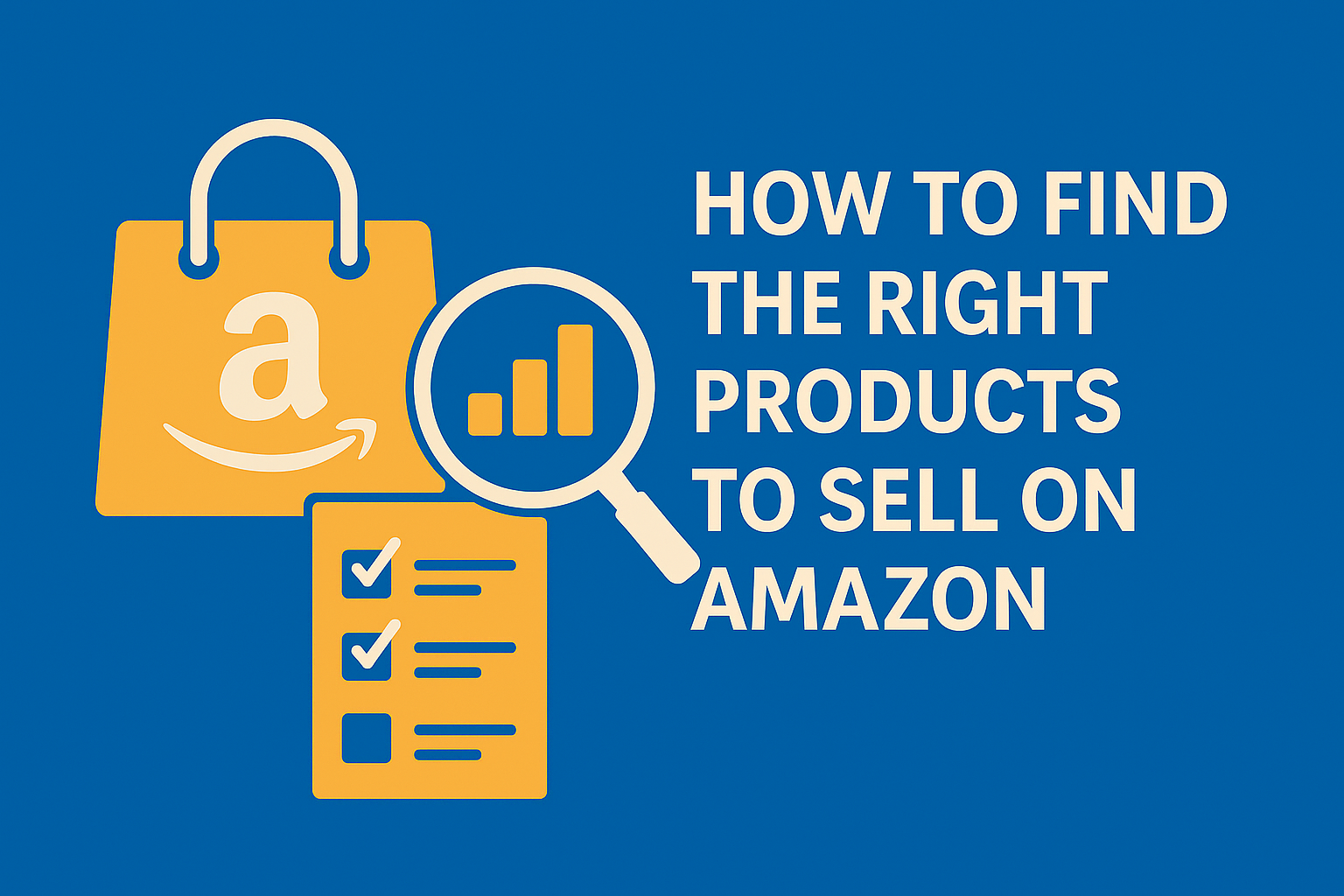How to Find the Right Products to Sell on Amazon (Based on Demand and Your Interests)
Starting your journey as an Amazon seller begins with a crucial decision: choosing a product that aligns with both market demand and your interests. With the right tools and strategies, finding and creating profitable products can be an exciting and rewarding process. In this beginner-friendly guide, you’ll learn how to identify product opportunities by combining personal insight with real market needs. We’ll focus on spotting pain points, improving existing products, and leveraging tools like Helium 10 and Jungle Scout to validate and refine your ideas for long-term success.
Step 1: Find Product Categories that Align with Your Interests and Market Demand
Start with What You Enjoy, Then Solve a Real Problem
Create a list of products or niches that align with your personal interests, hobbies, or professional background. Being close to the niche helps you empathize with buyers and spot opportunities others miss.
Ask yourself:
- What products do I use or love?
- Do I have experience in a specific industry or activity?
- Are there communities I’m part of that need better solutions?
Uncover Market Gaps and Pain Points
Go beyond brainstorming by validating your ideas. Use the following methods to find what customers are missing:
- Search niche forums like Reddit and Quora to find complaints or feature requests.
- Join Facebook groups related to your niche and read common posts and comments.
- Analyze 3-star reviews on Amazon for related products—these often reveal what people like but wish was better.

Step 2: Use Jungle Scout to Analyze Product Seasonality
Evaluate Seasonality with Historical Sales Data
Jungle Scout offers a powerful toolset for identifying whether a product is seasonal or has consistent demand year-round. Here’s how to use it:
- Open Jungle Scout and navigate to the Product Tracker or Opportunity Finder.
- Search for your product idea or browse by category.
- In the results, click on a product to view its detailed analytics.
- Look at the Historical Sales Graph. This graph shows sales trends over the past 3, 6, or 12 months.
- If the graph shows consistent sales each month, the product is likely evergreen. If there are sharp spikes (e.g., in November and December), it’s likely seasonal.

Step 3: Find Profitable Product Niches by Analyzing Best Sellers on Amazon
Browse High-Traffic Categories
Amazon’s Best Sellers page showcases the most popular items by category. Use it to identify high-demand niches and get inspiration for product types to research further.
Here’s how to access and use the Best Sellers list:
- Go to Amazon.com.
- In the top menu, hover over “All” and click on “Best Sellers” under the “Trending” section. Or visit this direct link.
- Navigate through the top-level categories to find one that interests you.
- Click into subcategories to find top-selling products that are more niche-focused.
- Make note of consistent top performers and analyze common traits like pricing, features, or bundles.
Identify Improvement Opportunities
Once you’ve found a few promising products, dig into their reviews. Look specifically at 3-star and 4-star reviews. These often contain feedback on how a good product could be even better.
- Are customers asking for additional features?
- Is there a recurring complaint about size, durability, or ease of use?
- Can you combine the best elements of two top sellers into one improved product?

Step 4: Validate Product Ideas Using Helium 10
Check Product Opportunity Score
Helium 10’s tools like Black Box and Xray help evaluate how attractive a product opportunity is. Here’s a step-by-step approach:
- Open Black Box and enter criteria like category, price range, review count, and monthly revenue.
- Review the list of products and click on those that interest you.
- Use the Xray Chrome Extension on a product page to see the Product Opportunity Score.
- A higher score means the product has good demand and lower competition—ideal for new sellers.
Conduct SEO-Driven Keyword Research
Use Helium 10’s Magnet and Cerebro tools to find the most searched terms related to your product:
- Use Magnet to generate a list of keywords from a seed phrase.
- Use Cerebro to reverse-engineer your competitors’ listings and find what keywords they rank for.
These keywords tell you what customers are searching for. The best way to create a successful product is to give your customers what they are already looking for. This also helps you to determine the size of your market on Amazon for your product. If all of the search terms related to your product have less then 300 searches per month the size of your market may not be large enough to scale and grow sales.
Step 5: Use Jungle Scout for Competitive Market Insights
Estimate Sales and Analyze Competition
Jungle Scout’s Opportunity Finder and Product Database can reveal key insights into how competitive a product is:
- Enter your product idea and filter results by revenue, review count, and rating.
- Check the average monthly sales to gauge demand.
- Low review counts combined with high sales suggest a niche with less competition and high potential.
- High sales indicate strong customer demand.
- Low reviews often mean the products are relatively new or haven’t been aggressively marketed yet. It also means the product is less established—offering you a chance to enter the market with a better offer.
Spot Underserved Niches
Use the Opportunity Score in Jungle Scout to spot gaps in the market. Look for products with:
- Strong sales volume
- Few listings with optimized images or copy
- Customer complaints you can solve
Combine these indicators with insights from your review analysis and keyword research to pinpoint underserved markets ready for disruption.
Step 6: Narrow Down Your Product Ideas and Plan Your Launch
Filter for Feasibility and ROI
With data in hand, compare your product ideas side by side. Use a spreadsheet to rank them by:
- Estimated profit margins
- Startup costs (tooling, MOQ, shipping)
- Search volume and keyword opportunity
- Competition level
Prioritize products with a strong balance of low risk and high return.
Prepare a Pre-Launch Action Plan
Before placing your first inventory order, map out your product launch strategy:
- Contact suppliers for quotes and samples
- Calculate landed cost including shipping and Amazon fees
- Create a professional brand with packaging and logo design
- Plan your initial marketing—including PPC budget and keyword targets
Launching with a clear plan helps avoid delays, budget overruns, and poor listing performance.
Conclusion: Find High-Demand Products in Categories You Love—Then Make Them Better
By combining passion with data-driven tools like Helium 10 and Jungle Scout, you can confidently select profitable Amazon products and build a business that scales. Continuous research and adaptation are your keys to long-term success.
Ready to Take Action?
Check out Helium10 and Junglescout and get started today!

Kaleb started his Amazon journey as a data analyst for a wholesale beauty brand, where he helped grow their Amazon sales from zero to over $1 million per month. Since then, he’s worked directly with more than 100 sellers across a wide range of categories, focusing on growing their sales through expert account and inventory management, ad strategy, and catalog optimization. When he’s not working with sellers, you’ll find Kaleb enjoying life with his fiancée Jerah and their dog Clifford, his favorite team outside of Amazon.

